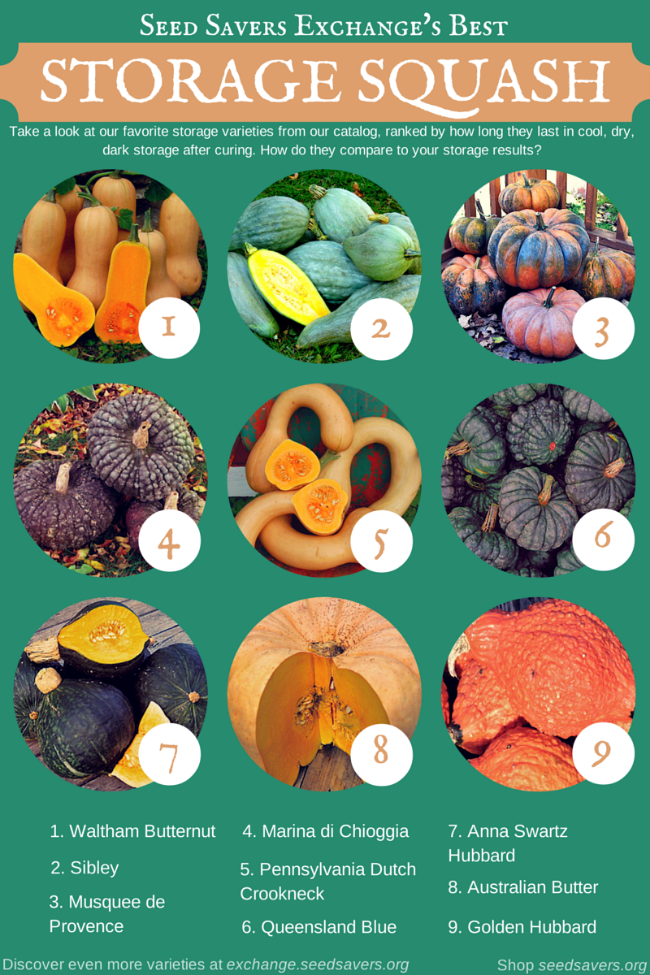Storing Heirloom Squash Over the Winter
/Time management is one of the most important, and elusive, skills to possess during harvest season but thank goodness for the almighty winter squash.
Staff at Seed Savers Exchange harvest Musquee de Provence Squash in September of 2012.
Sprawling, heavy, large and somewhat garish, these hearty fruits would seem ripe for demanding attention from the autumn gardener. However, unlike the tomato which insists on immediate processing or daily checks, all the humble winter squash asks of us at harvest time is to be brought in before it gets too cold, to find the cure for fall blues in a hot, dry room for a week or two, and to be checked on weekly after retreating into hibernation in a dark room.
And really, who wouldn’t want that?
Growing squash can provide healthy food through spring if stored properly over the winter.
If you have winter squash in your garden that are ready to be harvested, these simple steps can help you store them a bit longer so that you can delay processing, seed saving, and pie making until later in the winter when you’ve worked your way through your less patient produce.
Harvest your squash by cutting the fruit from the vine, leaving at least 3 inches of vine intact on the squash.
Take care to protect the skin of the squash from cuts and scrapes. Set aside any nicked fruit for earlier processing.
Bring squash into a warm, sunny spot with good air flow for a week or two to cure (with the exception of Acorn varieties, which should be cooled right away).
Store squash in a cool, dry location (around 50 degrees F and 65% humidity) - basements, garages and outbuildings work well. Inspect weekly for spots on the fruit - these should be used quickly. Turn squash gently to protect their skin and allow air to circulate around the squash.
Sort your squash by type to create a schedule of when to process and eat each one - make sure to arrange squash in storage so that you can get to your early varieties easily:
Any damaged squash should be used as soon as possible
Delicatas, Acorns, and Buttercups should be used within a month or two
Hubbards, Pie squash, and pumpkins can last up to 4 months
Butternuts last longest in storage and can take you right into spring
Seeds can be saved from squash after they’ve been in storage - in fact, seeds are best after the fruits have been left to sit for three weeks after harvest. When preparing your squash for eating, scoop out the seeds and wash lightly to remove clinging flesh. Label the seeds well so that you do not mix varieties. Lay the seeds out to dry, out of direct sunlight, until they can be easily snapped in half. Store them away somewhere cool, dry and dark for planting next year.
Even if you’ve never stored squash before, try it this year and make sure to check out our Catalog and the Seed Exchange for varieties to try in your garden next year!
Interested in learning more about seed saving from squash?
Seed Savers Exchange is a non-profit organization located in Decorah, Iowa, with a mission to conserve and promote America's culturally diverse but endangered garden and food crop heritage for future generations by collecting, growing, and sharing heirloom seeds and plants.














